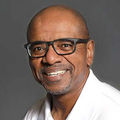One major goal of ACE’s Moving Together Outside campaign is to continue expanding structured, green physical activity programs post-pandemic.
Green exercise benefits everyone. But that is particularly true for those living in communities that are most vulnerable to lifestyle-related illnesses such as obesity, diabetes, and high blood pressure where a variety of physical activity opportunities may open new possibilities to attain an active and healthy lifestyle.
Here is a look at how Moving Together Outside helps to improve health equity in underserved communities throughout the nation.
Improving health equity in underserved vulnerable communities across the U.S.
“In the underserved communities in our region of Richmond, Virginia, there are so many barriers to implementing a healthy, active lifestyle,” said Jacki Quinlan, Director of Community Outreach at Sports Backers.
The top challenges that Richmond's community members face in implementing active lifestyles mirror those of similar communities across the nation:
- Lack of inclusivity at gyms. “People in these communities have expressed that they feel like gym fitness leaders and membership bases often don’t reflect their own community,” Jacki explained. “This becomes yet another barrier to them living an active lifestyle.”
- Safety concerns in neighborhoods. “Many of the neighborhoods in which Sports Backers works are impacted by crime,” Jacki said. “When community members don’t feel safe playing or exercising outdoors, they may feel they have to turn to indoor options, such as a local gym, which often comes with a hefty (and unsustainable) price tag.”
- Work and family priorities. “Vulnerable community members face incredible day-to-day stressors,” Jacki said. “When safe physical activity isn’t convenient or easily accessible, they must prioritize other activities that are crucial to supporting themselves and their families.”
Fortunately, the Moving Together Outside campaign is a key way to mitigate many of these barriers.
“Moving Together Outside is essential because it’s helping to convince local and state governments to expand access to safe outdoor spaces for structured physical activity classes,” Jacki said. “That is half the battle won. The other part is enlisting certified exercise professionals who understand the communities they serve to instruct those activities.”
Improving access for community members with disabilities
Different types of community members face different types of challenges.
People with physical and intellectual disabilities face very specific barriers to adopting an active lifestyle, sometimes in addition to the socio-economic challenges that other vulnerable individuals experience.
Rebecca Ralston, Senior Director of Early Childhood and Preventive Health at Special Olympics, explained the three major barriers people with intellectual disabilities face when implementing an active lifestyle:
- Limited access to inclusive physical activity programming. This encompasses a wide range of challenges related to transportation, schedule, cost, and the small number of active-lifestyle opportunities that meet their needs.
- Lack of social support. Social support includes the encouragement of family members and peers to live a healthy, active lifestyle. It also involves the ability of fitness and wellness professionals to adequately adapt programming that meets the needs of people with intellectual disabilities.
- Low self-efficacy. Low self-confidence relates to the challenges faced in the access and social support areas.
“People with intellectual disabilities can and do adopt healthy behaviors and improve overall health when joining appropriately adapted fitness programming,” Rebecca said.
The Moving Together Outside campaign can reduce some of the access barriers by creating more opportunities for inclusive fitness and wellness programs to exist across cities and municipalities.
“Inclusive fitness and wellness opportunities offered by for-profit and nonprofit organizations and professionals can be expanded into non-traditional spaces like parks, schools, and other green spaces in the community,” Rebecca said. “This broadens the options that meet people’s needs related to proximity, schedule, and sometimes cost.”
For example, Rebecca noted, Special Olympics offers a variety of inclusive sport and fitness programs at no cost to participants, but sometimes faces challenges securing facilities.
“The Moving Together Outside campaign can help Special Olympics’ programming grow by expanding the options for space availability to these outdoor, community-centric venues,” she said.
To learn more about how you can help increase public health in your city, visit the Moving Together Outside campaign website.




 by
by 








 by
by